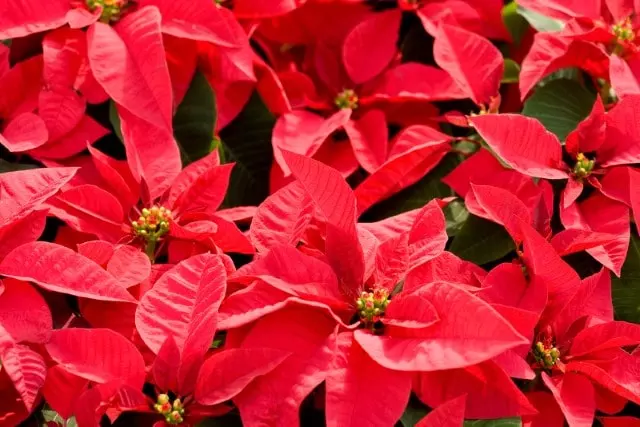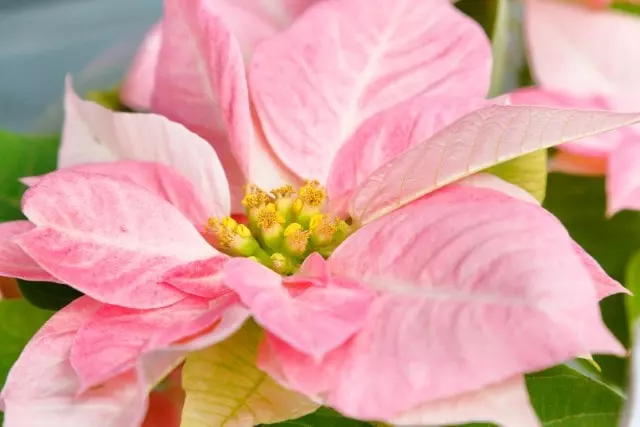Poinsettias (Euphorbia pulcherrima) are the most popular Christmas plants. Poinsettias in their natural habitat can be found from Mexico to Guatemala. In this article, I will explain how to propagate poinsettia step by step and succeed in propagation.
Poinsettias can be propagated by seeds and by cuttings, the method of propagation by cuttings is the easiest and fastest. Propagating a poinsettia by cuttings will produce a clone of the poinsettia. Continue reading to learn how to propagate poinsettia correctly.
Table of Contents
Different Methods to Propagate Poinsettias
There are two methods to propagate the poinsettia and, in this article, I will explain the two methods. The most common and effective method of propagation of the poinsettia is cuttings. Propagation by cuttings is the most suitable because the poinsettias tend to root and grow very fast.
On the other hand, poinsettias can also be propagated by seeds. You can get the seeds from your plants or from a friend who will give you seeds of his poinsettia. You can also buy quality poinsettia seeds in specialized stores. If you are going to buy seeds, you should read well about what type of poinsettia seed you are buying to have a high germination rate.
How to Propagate Poinsettia from Cuttings
How to Propagate Poinsettia from Cuttings? The best time to propagate poinsettias by cuttings is during the spring or summer, but if you are going to propagate poinsettias indoors you can propagate them all year round. If possible, I recommend using cuttings without flowers, the process will be faster.
Before starting to make the cuttings to obtain the poinsettia cuttings, I recommend that you wear gloves, as some people are allergic to the sap of the poinsettia. The sap of the poinsettia is very similar to the sap of latex.
Choose a vigorous, healthy, disease-free, and actively growing poinsettia. Select a cutting of 3” to 6” (7.5 to 15 cm), if possible, so that this cutting is not in bloom. Cut with sharp, disinfected scissors or pruning shears to get a perfect cut, thus increasing the chances of success in the propagation process.
In an article by the University of New Mexico, it is mentioned that the use of rooting hormones will increase the chances that the cutting will produce new roots. I recommend our article about homemade rooting hormones. Dip the cut end of the poinsettia into the rooting hormone.
- FASTEST ROOTING POWDER FOR PLANT CUTTINGS: Hormex rooting hormone powder is a unique product that encourages the natural process of rooting new plants from cuttings. Please check the list of plant varieties and rooting powder strength in the product photos.
- SUITABLE FOR ALL GROW MEDIUMS: Accelerate strong and healthy roots with this root stimulator for plants that are excellent for all grow mediums like Rockwool, coco, peat moss, soil, clay pellets, and more. As an added bonus, it also helps prevent root rot and sagging cuttings.
- NO BAD STUFF: Our root hormone for cuttings is an excellent powder to use even on the toughest and hard-to-root plants, like juniper, grapes, tomatoes, and more. It is made with no alcohol, dye, or preservatives, which is especially important when plants are for consumption.
Place the cuttings in a pot with a mixture of half sand and half peat. I recommend preparing the holes in advance. It would be best if you did not create holes with the poinsettia cutting. So, that the rooting hormone does not leak out when the poinsettia cuttings are placed in the substrate.
Place the pots in a place where they receive indirect light. Additionally, you can cover the pots with a plastic bag to increase humidity. In about a month, the poinsettia will have roots. Then you can repot your new poinsettias into a pot with good drainage.

How to Propagate Poinsettia from Seeds
Propagating poinsettias by seeds is very simple, but it is a slightly slower process than by cuttings. Once the seed pods begin to brown, remove them from the plant and store them in a paper bag. After the seed pods are completely dry, the seeds will come out by themselves.
Prepare a pot (or pots as needed) with a well-drained substrate, and make sure the pot has good drainage as well. Place the poinsettia seed and cover it with a thin layer of the substrate. Keep the soil moist for the poinsettia to germinate.
The pots should be located in a warm place, but out of direct sunlight. In a few weeks, you will begin to see new poinsettia seedlings. If you don’t have poinsettia seeds, I recommend getting some quality seeds from your local nursery, or you can use these poinsettia seeds.
Final Conclusions
Propagating poinsettias is easy, but it’s also a fun process. The propagation of poinsettias by cuttings is faster than by seed. By using poinsettia cuttings, you will get a plant just like the mother plant.
With poinsettia seeds, you can get plants similar to the mother plant, but you can also get seeds of other varieties of poinsettias to expand the variety of your plants.
I hope this article about how to propagate poinsettia will be useful, and that you will have success in propagation. I recommend our articles growing poinsettias outside and care for poinsettias.



